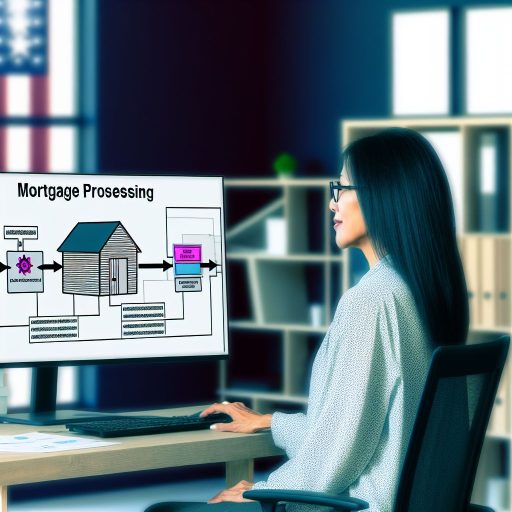Overview of Real Estate Market Analytics Tools for Rental Properties
Importance of Market Analytics
Market analytics are crucial for rental property investors.
They provide insights into property values and trends.
Furthermore, they help in identifying potential investment opportunities.
Types of Market Analytics Tools
Various tools exist for analyzing rental properties.
They fall into three main categories: data aggregation, comparative analysis, and forecasting tools.
Each type offers unique benefits to investors.
Data Aggregation Tools
Data aggregation tools gather information from multiple sources.
Platforms like Zillow and Redfin offer comprehensive property data.
They display price trends, rental rates, and neighborhood statistics.
Comparative Analysis Tools
Comparative analysis tools allow investors to evaluate similar properties.
Tools like Rentometer provide rental price comparisons.
These tools help in understanding local market conditions.
Forecasting Tools
Forecasting tools predict future property performance.
Platforms such as PropStream use algorithms for accurate projections.
They assist investors in making informed decisions based on trends.
Choosing the Right Tools
Selecting the appropriate tools depends on specific needs.
Consider factors like user experience, cost, and data accuracy.
Additionally, assess whether the tools integrate with existing systems.
Benefits of Analytics Tools for Investors
Analytics tools offer several advantages for rental property analysis.
First, they enhance decision-making through data-driven insights.
Second, they save time by providing ready information.
Lastly, they help minimize risks associated with property investments.
Importance of Data-Driven Decision Making in Rental Property Investments
Enhancing Investment Strategies
Data-driven decision making transforms rental property investments.
Investors rely on concrete data to analyze market trends.
This practice minimizes risks associated with real estate investments.
Maximizing Returns
Thorough analysis can significantly improve investment returns.
Data helps identify profitable rental markets.
Furthermore, it highlights the best property types for investment.
Understanding Market Dynamics
Market dynamics can change rapidly in the real estate sector.
Using analytics tools allows investors to respond swiftly.
Real-time data provides insights into property values and rental rates.
Evaluating Property Performance
Investors must assess property performance continuously.
Data enables detailed performance metrics on rental properties.
Key performance indicators offer a clear picture of success.
Mitigating Risks
Investing in real estate always includes certain risks.
Data analysis helps mitigate these risks through informed choices.
This approach limits exposure to market volatility.
Supporting Long-Term Planning
Data-driven insights support long-term investment planning.
Investors can set realistic goals based on market projections.
Moreover, it aids in anticipating future market shifts.
Key Metrics to Analyze in Rental Property Performance
Understanding Rental Yield
Rental yield measures the annual rental income as a percentage of the property value.
It provides insight into how effectively a property generates income.
A higher yield indicates better return on investment.
To calculate this, divide the annual rental income by the property value.
Then, multiply the result by 100 to get a percentage.
Evaluating Vacancy Rates
Vacancy rates reflect the percentage of unoccupied rental units in a given period.
This metric influences rental income and overall profitability.
A high vacancy rate may signal issues with property appeal or management.
Landlords can determine this by dividing the number of vacant units by the total units.
Then, multiply the result by 100 for the rate percentage.
Assessing Cash Flow
Cash flow indicates the net income after all property expenses are deducted.
It represents the money available for the owner after bills are paid.
A positive cash flow suggests a profitable rental property.
To analyze cash flow, list all monthly income and expenses.
Subtract total expenses from total income to find the cash flow amount.
Considering Capitalization Rate
The capitalization rate, or cap rate, evaluates the property’s potential return.
It compares net operating income to the property purchase price.
A higher cap rate typically means a more desirable investment.
To calculate the cap rate, divide the net operating income by the property’s value.
Then, multiply the result by 100 to express it as a percentage.
Tracking Appreciation Rates
Appreciation rates measure how much a property’s value increases over time.
This metric is essential for long-term investors aiming for resale profits.
To determine appreciation, compare the current property value to the original purchase price.
Express this increase as a percentage of the original value.
Consistent appreciation can indicate a strong market demand.
Monitoring Operating Expenses
Operating expenses encompass all costs associated with managing a property.
These include maintenance, management fees, insurance, and taxes.
Understanding these expenses is crucial for accurate cash flow analysis.
Landlords should regularly track and categorize all expenses.
This ensures proper budgeting and financial planning.
Understanding Debt Service Coverage Ratio
The debt service coverage ratio (DSCR) measures a property’s ability to cover its debt obligations.
This ratio is calculated by dividing net operating income by total debt service.
A DSCR above one indicates the property generates enough income to cover its debts.
Monitoring this metric helps manage financial risk effectively.
Utilizing Comparative Market Analysis
Comparative market analysis (CMA) evaluates similar properties in the area.
This analysis informs pricing strategies and investment decisions.
A well-conducted CMA considers location, size, and amenities.
It helps identify competitive rental rates and property values.
Regularly updating CMA data is essential for informed decision-making.
Uncover the Details: Smart Contracts and Their Impact on Real Estate Deals
Popular Analytics Tools for Rental Property Analysis
Introduction to Rental Property Analytics Tools
Rental property analytics tools help investors make informed decisions.
These tools leverage data analysis to reveal market trends.
Using these analytics, investors can identify profitable opportunities.
Moreover, they streamline the decision-making process.
Top Rental Property Analysis Tools
Several analytics tools stand out in the rental property market.
Each tool offers unique features tailored for investors.
Real Estate Financial Modeling Software
Real estate financial modeling tools assist with project cash flow analysis.
For instance, software like Argus helps evaluate investment returns.
Additionally, it enables sensitivity analysis on various scenarios.
Property Management Software
Property management tools help landlords track tenants and rents.
Software like Buildium and Appfolio offer comprehensive features.
They simplify accounting, maintenance requests, and leasing processes.
Market Analytics Platforms
Market analytics platforms provide insights into local market trends.
Tools like Zillow and Realtor.com showcase property listings and prices.
Investors can leverage this data for competitive analysis.
Comparative Market Analysis Tools
Comparative market analysis (CMA) tools help evaluate property values.
They enable users to analyze comparable sales in specific regions.
Tools like Redfin and PropStream assist in generating CMA reports.
Features to Look for in Rental Property Analytics Tools
Identifying the right analytics tool is crucial for success.
Many features can enhance your analysis experience.
Data Visualization
Look for tools that offer data visualization features.
Graphs and charts can simplify complex data interpretations.
Visual insights lead to quicker and better decision-making.
Integration Capabilities
Choose tools that integrate with other platforms easily.
Integration helps streamline workflows and data management.
Consider platforms that work well with CRM and accounting software.
User-Friendly Interface
A user-friendly interface promotes efficient operation.
Tools should be intuitive, enabling quick learning curves.
The simpler the interface, the easier the analysis process.
The Importance of Accurate Data
Reliable data is the cornerstone of effective property analysis.
Investors should emphasize tools that provide accurate information.
Outdated data can lead to poor investment decisions.
Delve into the Subject: IoT Home Surveillance for Property Protection
Comparative Market Analysis
Understanding Comparative Market Analysis
Comparative Market Analysis (CMA) evaluates property values in your area.
This tool helps landlords determine fair rental prices.
CMA utilizes data from comparable properties.
It analyzes recent sales, rental rates, and property features.
Collecting Local Data
Gather data from reliable sources like property websites.
Visit resources such as Zillow or Realtor.com for insights.
Local tax assessments can provide valuable information too.
Utilize MLS listings for the latest market trends.
Key Factors to Consider
- Location and its impact on desirability.
- Type of property and its unique features.
- Current rental demand in the area.
- Seasonal trends impacting rental prices.
Analyzing Comparable Properties
Select properties similar in size and amenities.
Look for properties within your neighborhood.
Analyze their rental prices and listing times.
This comparison reveals valuable price points.
Applying the Analysis
Use your findings to set competitive rental rates.
Adjust your pricing based on the analysis results.
This strategy enhances your rental property’s appeal.
Continuously update your CMA as market conditions change.
Discover More: Why Virtual Reality is Changing the Way Buyers Tour Homes

Integrating Technology: Using Software for Rental Property Management
Importance of Technology in Property Management
Technology plays a crucial role in managing rental properties effectively.
It streamlines operations and improves communication between landlords and tenants.
Additionally, it enhances data management and reporting capabilities.
Using technology leads to better decision-making and increased profitability.
Key Features of Real Estate Analytics Tools
Real estate analytics tools offer valuable insights for rental property analysis.
They provide market trends and property valuations to users.
Moreover, these tools often include tenant screening capabilities.
They help landlords evaluate potential tenants effectively.
In addition, automated financial reporting saves time for property managers.
Popular Real Estate Software Options
Several software platforms cater to rental property management needs.
For instance, Buildium facilitates property management and accounting tasks.
Another option, AppFolio, offers an intuitive interface for managing properties.
TenantCloud provides integrated solutions for tenant communication and maintenance requests.
Ultimately, choosing the right tool depends on individual requirements.
Data Security Considerations
Data security is critical when utilizing technology in property management.
Ensure the software provider follows industry-standard security measures.
For instance, encrypted transactions protect sensitive tenant information.
Regular audits and updates enhance security measures constantly.
Benefits of Integrating Technology in Rental Property Management
Integrating technology into property management greatly benefits landlords.
It reduces manual tasks and minimizes human errors significantly.
This leads to improved operational efficiency across the board.
Moreover, landlords can track key metrics easily, aiding long-term strategy.
As a result, property management becomes more efficient and effective.
Discover More: How Cloud Technology is Revolutionizing Real Estate Collaboration
Case Studies: Successful Rental Property Investments Leveraging Analytics Tools
Introduction to Case Studies
Rental property investments thrive with the right analytics tools.
These tools enhance decision-making and boost profitability.
This section explores successful case studies in the rental market.
Case Study: The Greenfield Apartments
The Greenfield Apartments utilized market analytics effectively.
Data driven insights informed purchasing strategies.
They analyzed local demographics and rental trends.
This approach led to a 25% increase in rental income within a year.
Key Analytics Tools Used
- Property Management Systems
- Market Research Platforms
- Financial Analysis Software
Impact of Analytics on Investment Decisions
Analytics enabled the Greenfield team to target high-demand neighborhoods.
They optimized their rental pricing based on real-time data.
This strategy significantly reduced vacancy rates.
Case Study: Riverside Realty Group
Riverside Realty Group leveraged analytics for property selection.
They evaluated properties using robust predictive modeling tools.
This proactive method helped them identify undervalued markets.
As a result, their portfolio expanded by over 30% in two years.
Tools and Techniques Employed
- Predictive Analytics Software
- Comparable Market Analysis Reports
- Investment Return Calculators
Benefits Realized from Utilization
Riverside Realty realized higher returns by minimizing risks.
They improved acquisition strategies through detailed market assessments.
Additionally, their analytics-driven approach fostered sustainable growth.
Impact of Analytics in Rental Investments
Both case studies highlight the power of analytics tools.
Investors gain valuable insights through strategic data analysis.
Consequently, they make informed decisions that enhance profitability.
Ultimately, analytics tools provide a competitive edge in the market.
Future Trends in Real Estate Analytics Tools for Rental Properties
Increased Use of Artificial Intelligence
Artificial intelligence will significantly impact rental property analysis.
Companies will leverage AI for predictive analytics and property valuation.
This technology will streamline tenant screening processes.
Moreover, AI will enable more accurate market trend forecasting.
Investors can enhance their decision-making with AI-driven insights.
Enhanced Data Visualization Techniques
Data visualization will become more sophisticated and user-friendly.
Professionals will prefer interactive dashboards and graphs.
These tools will simplify complex data interpretation for investors.
Visual analytics will help in identifying profitable investment opportunities.
Additionally, geographic information systems will visualize property locations effectively.
Integration of IoT in Analytics Tools
The integration of Internet of Things (IoT) will revolutionize property management.
Smart devices can provide real-time data for property performance analysis.
These insights will inform maintenance schedules and resource management.
Ultimately, IoT will lead to cost-saving efficiencies for property managers.
Furthermore, tenants will benefit from enhanced living experiences through smart technology.
Focus on Sustainability Metrics
Consumers will increasingly prioritize sustainability in their rental choices.
Consequently, analytics tools will incorporate environmental impact assessments.
Landlords will track energy efficiency and sustainability certifications.
This trend will encourage responsible property development and management.
Investors will find value in properties that promote eco-friendly practices.
Greater Emphasis on Mobile Analytics
Mobile analytics tools will gain prominence in the real estate sector.
Investors will rely on mobile apps for on-the-go data access.
This trend supports timely decision-making and instant performance tracking.
Moreover, mobile platforms will offer real-time market insights.
Flexibility and convenience will become key factors for property investors.




